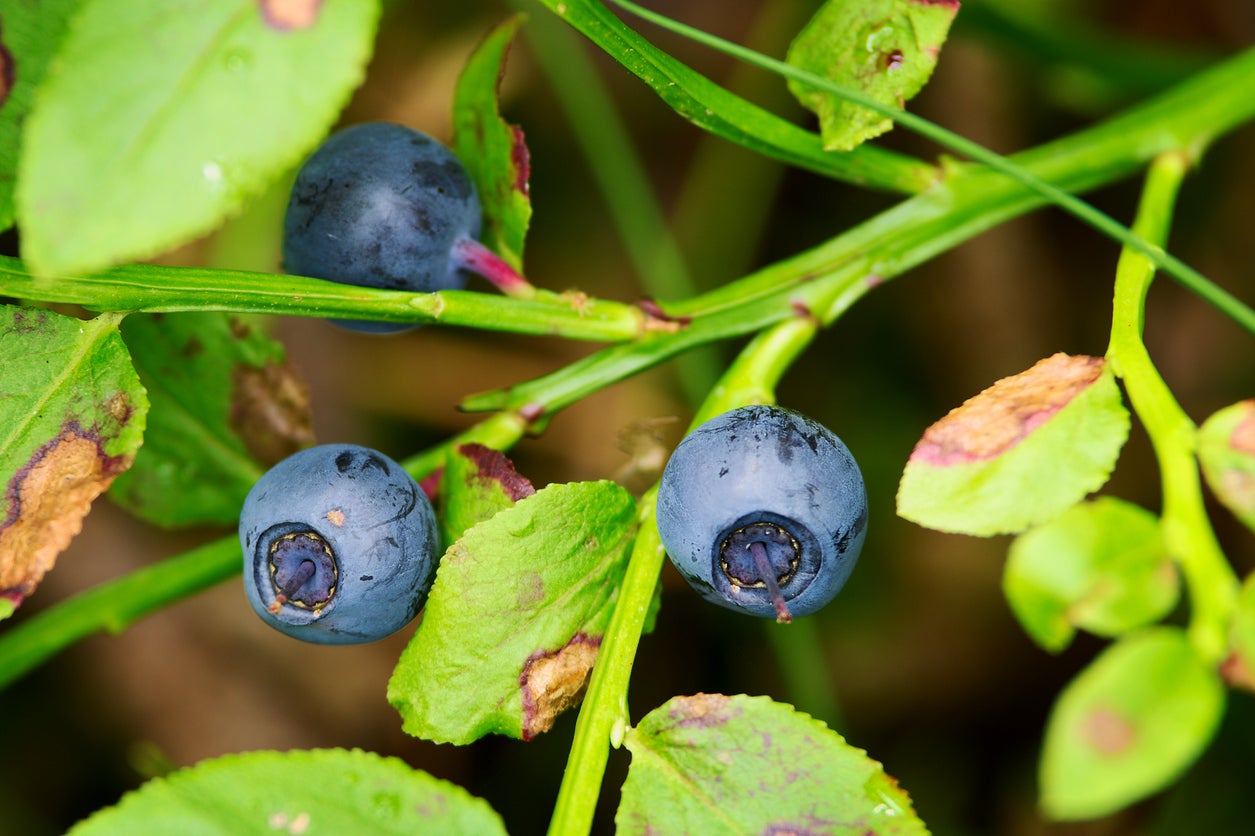Huckleberry Plant Care - Tips For Planting Huckleberries
What's a huckleberry? The name huckleberry may refer to any number of different berry-producing plants. Learn all about this delicious berry loved by humans and birds!

Caroline Bloomfield

The name "huckleberry" may refer to any number of different berry-producing plants including blueberries, bilberries, and whortleberries. This leads us to a rather confusing question, “What is a huckleberry?”.
What is a Huckleberry?
Huckleberries are perennial shrubs about 2 to 3 feet (61 to 91.5 cm.) tall when grown in full sun but may become 10 feet (3 m.) or more when grown in shade conditions - most are deciduous but some are evergreen. New leaves are bronze to red in color and mature into a glossy green through the summer months. The black-purple berries of huckleberry plants are the resultant of tiny, pale pink urn-shaped flowers that appear in the spring. This delicious fruit is, in turn, eaten fresh or turned into jams and other preserves. Birds find the berries hard to resist as well.
Where Do Huckleberries Grow?
Now that we know what they are, it might be prudent to inquire where huckleberries grow.
There are four species of huckleberry in the genus Gaylussacia, which are native to the eastern and southeastern United States, but these are not the berries to which we are referring.
Western huckleberries belong to the genus Vaccinium and found among the coniferous forests of the West Coast of the United States.
The flowers and fruit of western huckleberries appear akin to those of high bush and low bush blueberries and are, indeed, Vaccinium species as well, but in a different taxonomic section (myrtillus) than other blueberries, as they produce single berries on new shoots.
High and low bush blueberries produce berries on year-old wood with a much greater yield. The most common of these is Vaccinium deliciosum, or cascade bilberry.
Sign up for the Gardening Know How newsletter today and receive a free copy of our e-book "How to Grow Delicious Tomatoes".
How to Grow Huckleberries
Keep in mind when planting huckleberries that the species requires moist, acidic soil anywhere from a pH range of 4.3 to 5.2 .
They can be planted in either sun or shade, although you will get a better yield and larger, lusher plants in shaded areas.
If you live in USDA zones 7-9 where the specimen is recommended for planting, expect the huckleberry to flower between April and May,
Huckleberries are often found thriving in mid-alpine regions. Propagation can be from transplanting, rhizome cuttings, or seeding.
Transplanting wild bushes is difficult due to their lack of centralized root systems, although this may be attempted in late fall to early winter.
Grow the huckleberries in a pot for one to two years in peat moss-based soil before transplanting them to the garden.
You may also start growing huckleberries via rhizome, not stem, cutting. Collect the rhizome cuttings in late winter or early spring, in 4-inch (10 cm) long sections buried in sand-filled nursery flats. Do not dip the cuttings in rooting compound. Keep flats misted or covered with clear film to retain moisture. Once the cuttings have 1- to 2-inch (2.5 to 5 cm) long roots and shoots, transplant into 1-gallon (4 L.) pots with peat moss-based soil.
Huckleberry Plant Feeding and Care
Huckleberry plant care involves feeding with either a 10-10-10 fertilizer, manure, slow-release, or granular fertilizer.
Do not use weed and feed fertilizer. Granular fertilizer may be applied beginning May, June, and July, while manure can be used anytime. Follow the manufacturer's directions for other fertilizers.
Do not use herbicides on western huckleberries. Use mulches and do hand weeding for weed control. Pruning is not needed on young plants as huckleberries grow slowly; prune only to remove dead or diseased limbs.

Amy Grant has been gardening for 30 years and writing for 15. A professional chef and caterer, Amy's area of expertise is culinary gardening.
- Caroline BloomfieldManager of Marketing Communications